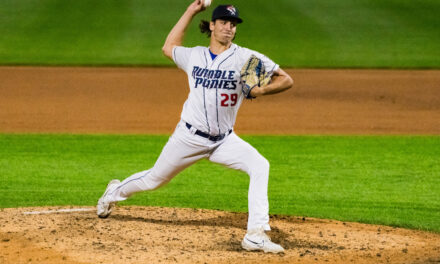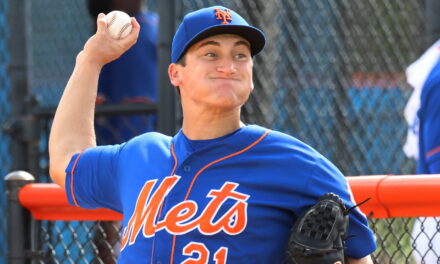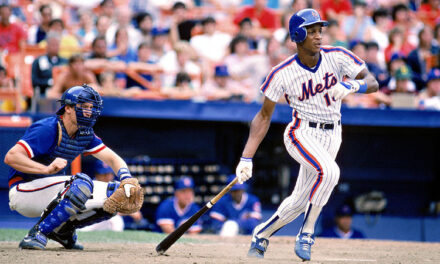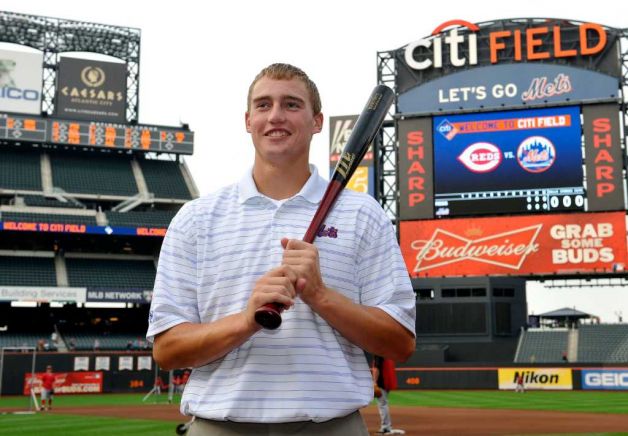
For over thirty years, Jim Reeves has been traveling the Pacific Northwest as an area scout, responsible for roughly 2,000,000 square miles, to help the New York Mets find the next crop of potential major league talent.
The role of an area scout involves getting to know the programs, schools, coaches, and players in their respective territories, and traveling to various games and showcases in order to assess and analyze potential draft picks for their organization.
Scouts are continuously juggling the current crop of ballplayers who are eligible for the nearest draft while keeping tabs on younger players they’ve come across in their travels for future evaluation and reports.
For Reeves, a sixteenth-round pick by the St. Louis Cardinals in the 1977 June Amateur Draft, blending professional experience in pro ball with gut instinct and an altruistic nature has led to several significant signings over the last dozen years.
Reeves was the signing scout for Brandon Nimmo (2011), Michael Conforto (2014), and David Peterson (2017), who have all contributed to the Mets and brought their own unique set of skills to the club.
After thirty-plus years of long travel, time away from family, and scouting countless players, Reeves has decided to retire.
The Mets celebrated his decades-long service with the organization on September 4th, when they had him throw out the first pitch prior to the start of their game against the Washington Nationals.
In a touching moment, Peterson caught the pitch from Reeves and Nimmo came out of the dugout to greet and hug the scout who first gave him what all hopeful young players yearn for: an opportunity.
I had the privilege of speaking with Reeves towards the end of the regular season, where he discussed how he initially got into scouting, learning on the job, and his evaluation process for Nimmo, Conforto, and Peterson.
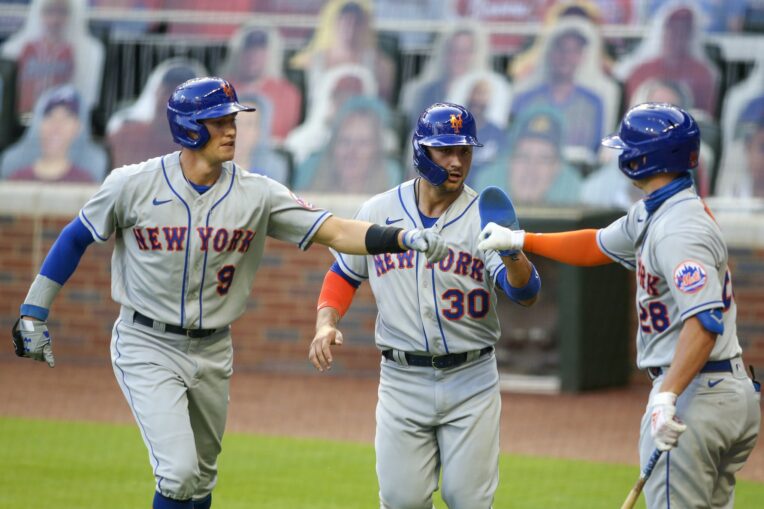
MMO: You were selected by the St. Louis Cardinals in the 1977 MLB Draft out of Southern Illinois University. How long after your professional playing career ended did you get into scouting?
Reeves: I played in 1977, 1978, 1979, and into 1980. I realized that my baseball career was going to be coming to an end, like a lot of minor league players.
I finished college and moved to Chicago to start a career. I was working for a big telephone company and really enjoyed it, but something was missing.
After about five years I stumbled upon a place that was a big indoor baseball facility. I would go in there and hang out a bit and met some people.
I ended up giving lessons to younger kids. I met a lot of people, met some coaches, and it turns out a good buddy of mine got a job as a head coach at a junior college there, so I started helping him out. I believe that was around 1985 that I started helping him.
I met some baseball scouts in the area and realized that baseball is in my blood pretty deeply. I started helping my buddy out as I was working full-time; I had three jobs at the time. But I loved baseball and found a way to kind of get back into it with coaching.
Then through some of my contacts with pro baseball, I kind of started helping out the Mets part-time. There were guys like Todd Hundley, Dan Wilson, and a few other guys [that I helped scout]. I found that really interesting so I started to get more involved with scouting and coaching.
The guy that was out here for the Mets, Marv Scott, retired and was responsible for Wally Backman, Doug Sisk, and several other players. They offered me a full-time position out here in 1990, and the wife and I said, “Why not? Let’s give it a shot.”
MMO: So your scouting career started with a part-time role?
Reeves: Yes. Most of the scouting was done in the spring and summer. Because I was helping out the junior college team, I was able to see a lot of the junior college teams in the area.
I would go see some high school games on occasion and help Phil Favia, who was the full-time scout in the Chicago area for the Mets.
I was helping out here and there and evaluating some players; I really had no idea what I was doing, it was more gut instinct than anything. I’d go back and remember watching guys who I played with that I felt had major league potential. It was a big learning experience for me.
MMO: Except for those early years in Chicago, have you always been a scout based in the Pacific Northwest?
Reeves: Yeah, other than those two-to-three years back in the Chicago area.
My wife and I moved out here and it’s funny, I thought to move out there and I’ll get some education as to how to scout for a professional team full-time, and then we’ll probably end up moving back to the Midwest to be closer to our families. We got out here and moved to the Portland area and it’s a big area, you have Washington, Oregon, Idaho, Montana, Wyoming, Western Canada, and Alaska. Obviously, there are not a lot of players in some of those remote areas but nonetheless, it was a big area and a lot of travel.
We got out here and my wife loved it, I loved it, we raised our kids out here and we eventually stayed. I had a couple of opportunities to move down to L.A. or Phoenix, but for Joan (his wife), it just wasn’t what she really wanted to do at the time.
It worked out great, we love it in the Northwest and it’s a wonderful place to raise a family. A lot of driving, and travel is tougher out here in some respects, but we love it.
MMO: You mentioned having to learn on the job as an area scout. What were some of those responsibilities you needed to adapt and adjust to?
Reeves: When you’re getting out there and are responsible for a particular area, it’s up to you to go out and find the players.
The first few years I had to learn my territory; you have to learn where the players come from. It’s mostly the I-5 corridor, which runs from Southern Oregon up Portland and through Seattle and to Vancouver, B.C. That’s where the majority of the population is out here.
You have to learn where the best high school players come from, and of course, back in 1990 it was a lot different than it is today because there weren’t the showcases, you really had to dig! You had to watch the older scouts and where they went and what they were doing and try to figure out a pattern or how they were working the areas. That took a couple of years but I had some really good mentors in the game and those guys helped me out.
You also need to learn how to write reports on players. You’ve got to break them down, break their tools down, assign grades to those tools but then also talk about their strengths and weaknesses, and then an overall summation as to what you think this player is going to be five-to-six years down the road. If he’s going to be a big-league player, what type of player is he going to be at the major league level? What is he going to bring to that major-league team that’s going to help them win?
So, when you put it like that, when you’re a young scout, that’s tough! You have to feel good about your opinions and you have to go with it and stick to your guns on players.
There were a lot of mistakes made those first few years, no doubt, but I think that happens with every scout. Now we have a lot of analytics and data that help back up those decisions. Back in those days, we didn’t have that, so you were pretty much putting your own reputation and opinions out there. It was a little different back in those days, but it was fun.
I was surrounded by a lot of good scouts, not only here in the Northwest, but within the organization with the Mets. Everybody helped everybody else out. There were those older guys in the area and guys out here in the Northwest that were tough to read at times and couldn’t get information out of. It’s like a big poker game but that was the fun part and I’ve always enjoyed that, trying to figure things out and the psychology of scouting.
I don’t know if we have that as much today, at the higher levels they do, but that’s kind of what made it fun and interesting for me.
MMO: In regards to the amount of data and analytics utilized with all thirty clubs today, are there certain differences you’ve noticed with your job when it pertains to the use of analytics compared to when you first started?
Reeves: That’s a tough question. There’s just a lot of data and analytics that people are relying on.
It’s hard to say, Mathew. I didn’t get into it as much as I know a lot of guys in the office did. They have access to all of that stuff; I really didn’t have a lot of access to it. I didn’t let that bother me, I just did my own thing and pretty much scouted the player themselves and left the analytics to everyone else. Even to this day, I don’t know exactly everything that went into those guys making the decisions that they did.
I think it’s a good thing; the more information you can gather on players the better. I think in the end, we’re dealing with human beings, and everybody is a little bit different. These are 17, 18, 19, 20, and 21-year-old kids, and nobody knows for sure how they’re going to react when they get into pro ball. I’m glad I’m not doing that end of it! [Laughs.] That’s a little bit over my head, to be honest with you.
I was never a big computer person. Everything was pretty much gut reaction, watching the player, and just getting to know the player and forming those bonds and finding out what makes them tick and if they have the makeup and desire to be able to move onto that next level. And not only move onto that next level but be able to pull out what makes them as good as they can be.
MMO: Besides the athletic tools you were looking for, what other traits would you try to identify when scouting players?
Reeves: I think the most important thing about a young player is I want to see them compete almost every time they go out there. That’s the one thing that I think separates the players.
There have been many, many players over the years I’ve watched, and you just watch them go out on the field and you can tell that they’re competing. Sometimes instincts can improve obviously, but just watch a kid play.
A lot of times, I’d put myself in the shoes of a hitter if I’m watching a pitcher. I’d put myself in the batter’s box and think, Can this guy get me out? Will this guy intimidate me? Doing that with all the different players, if possible, as a scout I felt that it always helped me because I used to play. I was involved with it and I knew what these guys were thinking when they were in the box or on the mound and what pitch they were going to throw. Things like that and just seeing if they’re playing the game the right way, and just their attitude.
A guy like [Brandon] Nimmo, man, he was fearless out there. He wasn’t the greatest player at the time in high school, and he knew it, but he also knew he was going to get better. Talking to these kids and knowing that they’re going to do everything they can to make themselves as good as they can be, that’s really, really important.
I’ve talked to kids along the way who felt they were really good and were just going to go out there and be better than everybody else without putting in the effort. Those guys weren’t the ones we wanted.
There are a lot of things that come with it, depending on what position you play, but I looked at the guys who were dedicated to what they were doing and just had a lot of fun doing what they were doing.
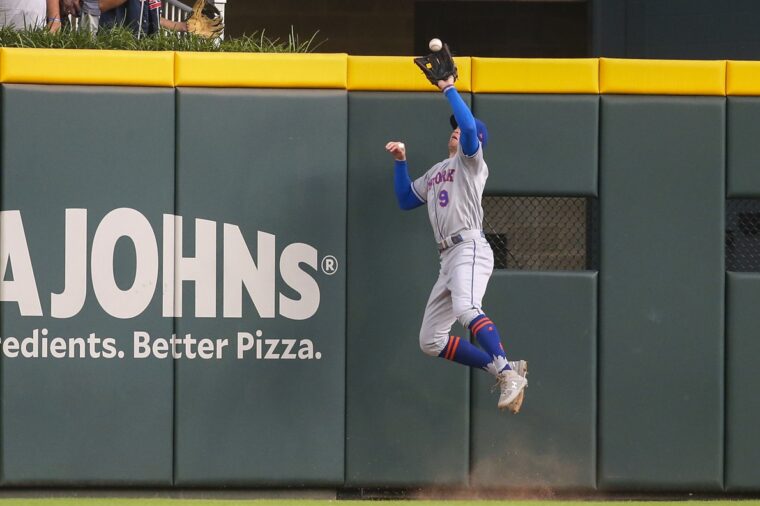
Brett Davis-USA TODAY Sports
MMO: You were the signing scout for three big names in recent memory in Brandon Nimmo, Michael Conforto, and David Peterson. Can you talk about your recollection of scouting each one? Let’s start with Nimmo.
Reeves: He was drafted in 2011 so he was the first guy to come along. A bit of a funny story, he has an older brother who was probably five-to-six years older than Brandon. I believe his name is Bryce. He wasn’t as big as Brandon, was a centerfielder, a left-left guy, and I had gotten word that there was a good player over in Wyoming. I called his coach and got all the details and flew over.
It was early May and with American Legion Baseball there was a little tournament going on and they were matching up with a big right-handed pitcher out of Montana who was going to Stanford. I thought this would be a good chance to see this guy (Bryce) that I had been hearing about, so I flew over and there was maybe a dozen or so scouts there from the area.
It was cold, it was like twenty-five degrees and snowing, so it wasn’t a very pleasant day in Casper, Wyoming, and the wind just howls there! We’re watching the game and there’s nobody in the stands and this family comes and sits right behind me.
We start talking and it turns out it was the Nimmos; it was mom, dad, and Brandon. And Brandon was probably 12 years old. We struck up a conversation and I told him I was there to see their other son. Their son was a really good player, but he was going to the University of Nebraska.
I got to know them a little bit and a few years later the head coach called me and said, “This Brandon Nimmo kid is starting to fill out and get a bit bigger and is a pretty good ballplayer.” I got to know him a little bit and I saw him, I believe, after his sophomore year in high school, and at different tournaments. They would always come over and play in Idaho or Oregon or some summer tournaments. I just got to see him and I had a little flag there saying hey, I better keep an eye on this kid, he looks pretty athletic.
I saw him in the summer after his junior year and he’s really coming along. His instincts were improved, he was a centerfielder then, and I just liked the way he swung the bat. He was aggressive, sprayed the ball all over, could run; all the tools that we look for. It was still hard at that time to put the whole thing together; I think he was going to the University of Arkansas, so he had a good scholarship waiting for him.
Fortunately, he got to play in some showcases, and I think he played in the Under Armour tournament in Chicago at Wrigley Field. Some guys saw him out there and we agreed that this guy has some ability. That’s what you do, you keep following guys and watching them and see how they progress. And that was the thing with Brandon, every time I saw him he added a little something to his game.
I know a lot was made of him only playing American Legion and there was no high school [ball], but if you go to Montana and Wyoming, there’s no way they can play baseball in the springtime in those areas. They had a really good Legion program, and they started working out around February-March, as soon as basketball was over. They weren’t outside a lot but they had a nice indoor facility and the coach would take them down to Arizona for a little spring training and play some high school teams. That spring that’s what I did, I saw him play in Arizona a couple of times and then I saw him in the fall before that in Arizona as well.
He was on the map and on our radar, and one thing led to another, and our guys saw him in the springtime. Chad MacDonald and [Paul] DePodesta saw him and liked him. He just kind of fell in our laps and I was a little surprised, to be honest with you, that we would take a guy from Wyoming, but players come from everywhere.
I have to hand it to the guys in the front office and scouting department, everybody that saw him had good reports on him. Those decisions aren’t made by just an area scout. I just said what I had to say about him as far as his abilities and let them know that this kid wants it really bad, he’s got great makeup, a great family that supports him, and then we got him.
He went to the minor leagues and showed everybody he could do it. And even to this day, you look at Brandon over the last year or two, and he’s improved his outfield play, his ability to hit left-handers, and that’s what makes these guys good major leaguers is they continue to improve on their weaknesses.
Brandon was the type of guy where it was easy once I got into his makeup and realized I had nothing to worry about with this kid. I mean, he’s just going to work his tail off.
It’s when you get those phone calls about this guy is in trouble or he’s not doing his work, those are the phone calls you don’t want to get.
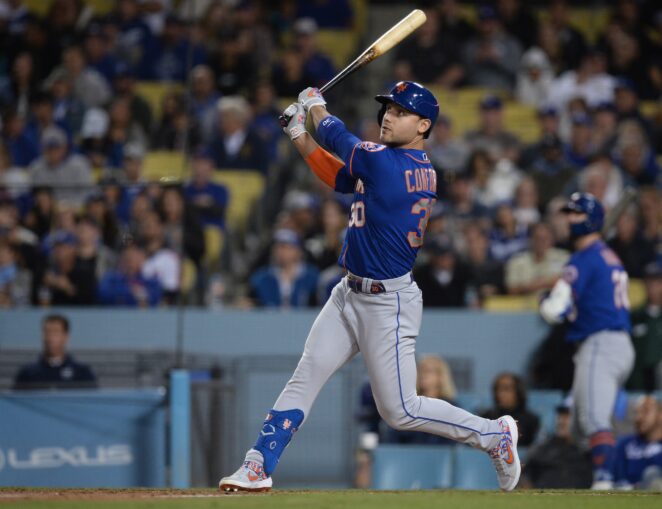
MMO: How about Conforto?
Reeves: Michael was easy pretty much. He went to high school in the Seattle area, and I think I saw him when he was fifteen or so.
He was playing at a higher level than most of his classmates and you could just see it, man. He had the ability to hit. He was a shortstop at the time, obviously, I didn’t think he was going to be a shortstop, but you just loved the way he swung the bat.
He had big strong shoulders when he was sixteen and had some juice in his bat and could do a lot of things. But when he got into his senior year of high school, they made it pretty clear that he was going to college, and he went to Oregon State. We followed him and I kept my eye on him and he just flourished in college.
[He] got with Pat Casey in Oregon State, and when he was younger he had more of an uppercut swing. Pat got a hold of him and tried to level his swing out which really helped, and did great work with him there. It helped make him into the player that he is.
Michael has a great family, and great genes – both his parents were athletes – so that was an easy one for me. I was a left-handed hitter myself and I just loved his swing, I thought it was a beautiful swing.
I also felt that Michael came a long way with his defense too. He was a corner outfielder and I know I read some things where people didn’t like his defense, but I thought it was more than adequate. He was taught well at Oregon State, and I wasn’t worried about his defense at all.
Honestly, I never thought he’d be a center fielder and I know he got some time with us in center, but I think it was just because it was what they needed at the time.
Michael was a pleasure, he was humble, and the makeup was just off the charts. You knew this guy would do everything he could to make himself into a player.
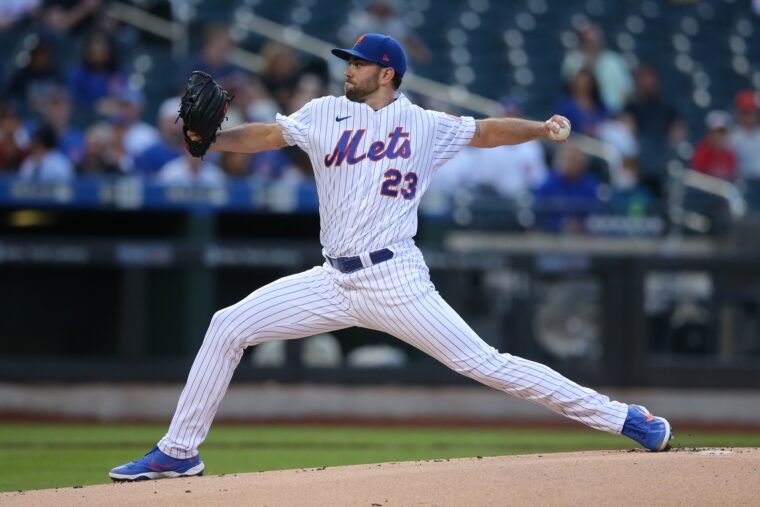
Credit: Brad Penner-USA TODAY Sports
MMO: And Peterson?
Reeves: David was a Colorado kid so I never saw him when he was young. I think he was possibly a high pick coming out of high school, but he broke his lower leg in basketball so pro ball didn’t work out for him at the time.
He came to the University of Oregon and I remember seeing him in his freshman year and thinking, Holy cow, look at the size of this guy! It’s like when you see a guy for the first time and the hair on the back of your neck stands up a little bit and you go, oh, I really like what I see here. It’s just one of those instinctual things the first time you see a player.
I really liked what I saw in the fall. He’s a big guy that’s athletic and he needed to get his body in shape, and I think he knew that maybe coming off that leg injury. And he did.
I got great reports from his coaches on his makeup and that he works harder than anybody else on the field. I think in his freshman year he might’ve led the team in wins out of Oregon and he really just opened some eyes for a lot of people.
I got to know him and knew that this kid was intense, he wanted to win and was a competitor. I keep going back to that, and the same way with Michael. When the game was on the line you wanted them in those spots, and David was like that. He was a winner, a competitor, and again, he kind of fell into our laps with the 20th pick. At the time, we didn’t think there was anybody else better in the draft and we took the shot with Petey, and he’s turned out to be a very fine major league pitcher.
I think with just about any other club in Major League Baseball he’d be a front-line starter. He’s been doing a great job and I think he’s about to break out.
MMO: I interviewed Jon Updike – the scout who signed Pete Alonso and Matt Allan – for Mets Merized a few years back, and he told me that watching the players he signed move up the ranks and make it to the majors made him feel like a proud parent. Is that how you viewed it as well?
Reeves: Absolutely! Not only with the guys, you get in the draft, but with guys that you got to know along the way that other teams have drafted. You spend a lot of time with these guys.
I’ll be honest, I’m probably a bit more partial to hitters just because I was a hitter. We would do things in the Northwest and in the Portland area, and for many years on Sunday nights we’d get various indoor places and there’d be about four-to-six scouts and we’d invite players: high school, junior college, college, anybody wanting to come in and hit for a few hours. They’d hit for free and just hang out. We’d throw batting practice and talk with them and get to know them a bit, and find out how much they knew about hitting. We also had some pitchers and it was just a fun time.
You get to know these kids and really care about them. Some scouts over the years have said you don’t want to get too close to these guys, but I wasn’t that way. I felt like I wanted to help these kids if I could a little bit in coaching them. And coaching them wasn’t really a scout’s job and I understand that. It’s hard to keep your opinions to yourself sometimes if you see that a kid is not getting his bat loaded or is dropping his hands. It’s tough to bite your tongue and not say anything.
But you get to know these kids and their families, and you watch these guys play and you feel like you’re one of their coaches. You want to see them succeed and excel and get to be where they want to be.
I agree with Jon, it’s like they are your own kids. Being a baseball player myself at one time, you feel like you’re teammates with these kids. I think we’re losing some of that but that’s the way I grew up doing it in scouting and I felt like I had an edge sometimes against other organizations because I knew these players pretty well.
MMO: You were honored for your years of service and got to throw out the first pitch at Citi Field in early September. What was that experience like and to have Peterson and Nimmo on hand?
Reeves: It was awesome! I can’t tell you enough, especially all the people who were there with the Mets: Sandy [Alderson] and Marc Tramuta. Tommy Tanous wasn’t there but I talked to him a little bit [prior].
The Mets have been great to me and this was a special honor. To be able to take my wife back to New York and be a part of it was just awesome. It’s a great way to go out and I’ve enjoyed all the years I’ve been with the Mets.
It’s good to see them winning now. I’m still overwhelmed by it! A lot of teams don’t do this type of stuff anymore. I had some older buddies who are long gone now where some clubs had done this. But those types of things had died out but for the Mets to do this was really special. I don’t have enough words to express how I feel.
MMO: Thanks for your time and insight, Jim! Congratulations on a well-deserved retirement.
Reeves: Thank you, Mathew.
Follow Jim Reeves on Twitter, @jreevesnym


